Last Updated: April 30, 2024
Costa Rica is well known for its impressive wildlife, but some places offer notably better viewing than others. One such spot is the Cano Negro Mixed Wildlife Refuge near the country’s northern border with Nicaragua. This remote wildlife refuge is best accessed from La Fortuna or Bijagua. We recently took a boat tour along the river. In this post, we’ll share some of the amazing animals and birds we saw and how you can plan a visit.
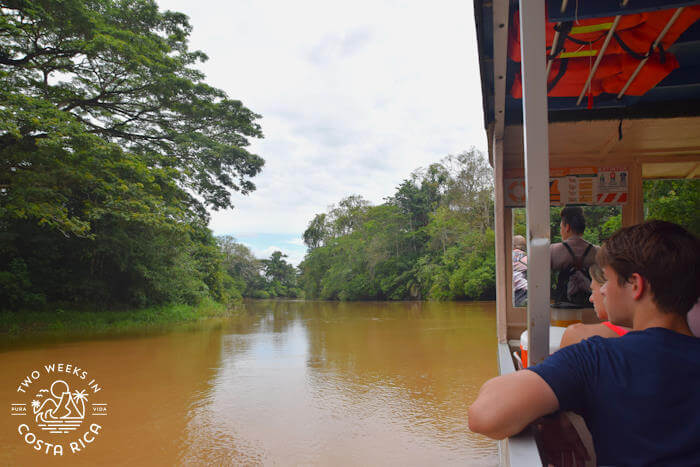
About Cano Negro Mixed Wildlife Refuge
Cano Negro Mixed Wildlife Refuge (Refugio Nacional de Vida Silvestre Mixto Caño Negro) is a large river and wetland ecosystem near the Costa Rica-Nicaragua border.
With an impressive 9,969 hectares (24,634 acres) of protected habitat, this national park hosts around 160 species of mammals, including monkeys, sloths, and even jaguars. There are 90 species of bats alone!
Birds are also abundant. The wetlands are an important stop for North American migrants that overwinter in the tropics. More than 300 different bird species have been identified at Cano Negro.
Our Tour Experience
Driving to Cano Negro
Our tour began in the town of La Fortuna near the base of Arenal Volcano. Here, we hopped into a small van with our tour guide, Alvaro, and a few other tourists. Alvaro explained that the drive to Cano Negro and the Rio Frio (Cold River) would take about 1.25 hours.
It was a long drive but far from boring. As we passed farm fields, small rivers, and patches of forest, Alvaro explained all about the area.
The farms, he told us, were growing yucca, cassava, and taro root vegetables. He explained more about each one, how they are planted and harvested, and what they are used for.
As we got closer to Cano Negro, Alvaro turned down a bumpy side road. We drove more slowly now, around the ruts and big bumps, and started to see some wildlife. There were wading birds and even small caiman (crocodiles) in the wet drainage basins along the road.

The Rio Frio
We soon made it to the tour operator’s base camp next to the Rio Frio. Outside, a few large pontoon boats were docked.
The Rio Frio, we learned, runs through the Cano Negro Mixed Wildlife Refuge and eventually flows into Nicaragua. Shortly after crossing the border, it connects with the enormous Lake Nicaragua.
The wide river was brown and murky from silt, with grand trees and thick shrubs along the edges. Oversized iguanas sunned themselves on the grassy bank by the boats.
Stepping out of the van, our group was led into a big building with some other small tour groups. There was fresh fruit, coffee, juice, and cold water waiting for us. We also met the other guides who would be with us that day. Along with Alvaro, there were two guides, both named Jason, and the boat captain, Max.

Cano Negro Boat Tour
First Sightings
Without even pushing off from the dock, our guides started to point out the wildlife around us.
On the left side of the boat, a big caiman was partially submerged, keeping a close eye on us.
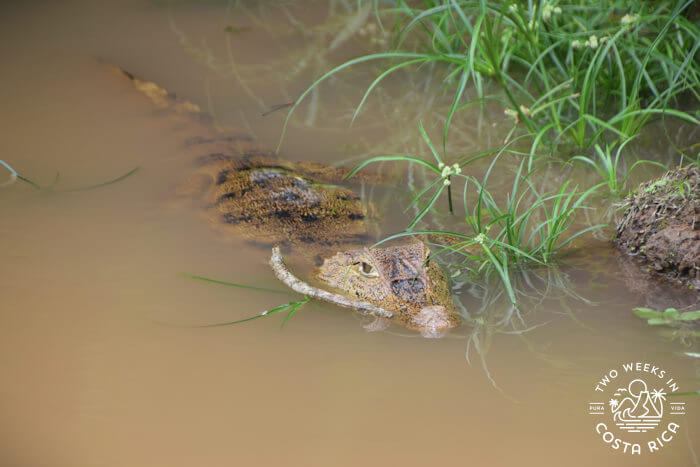
In the nearby tree was a camouflaged bird called a potoo. Our guide Alvaro zoomed in with his scope. Potoos are some of the most interesting birds in Costa Rica. Their plumage looks exactly like tree bark, making them blend in perfectly.
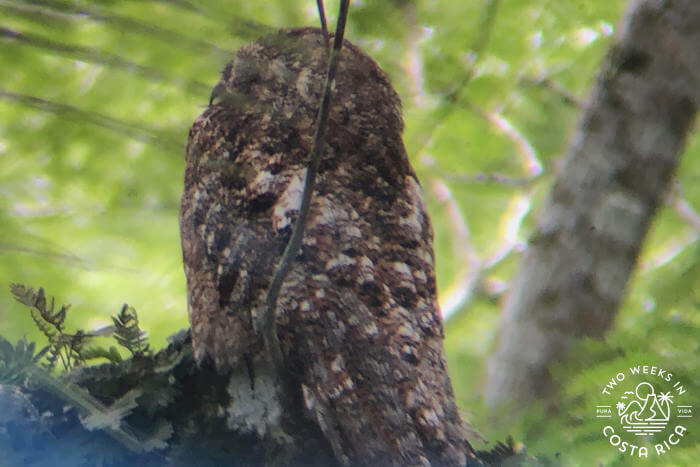
As we began motoring down the slow-moving river, Max, the captain, steered us closer to the forest. Our guides pointed out iguanas and river turtles sunning themselves on logs.
We also saw monkeys. First, there was a troop of howler monkeys. These bigger blackish monkeys moved slowly through the trees. As the boat went under them, they let out loud bellows. Our guides told us these monkeys could be heard as far as 2 miles (3.2 km) away.
A larger male, the alpha, snapped branches and tossed them into the water below at us.
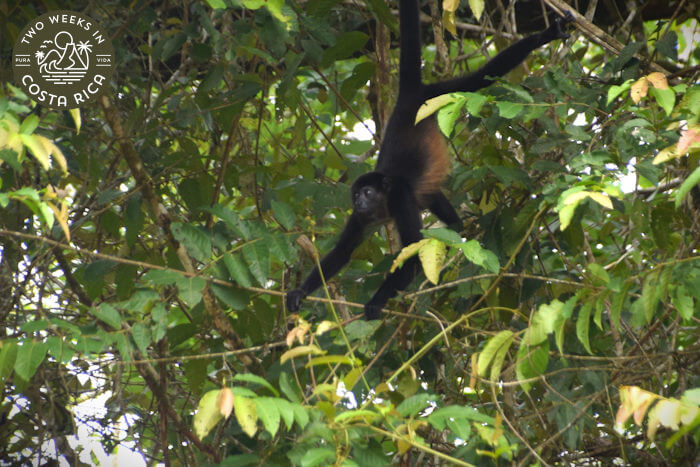
The Golden Monkey
Upon closer look, we noticed something strange about one of the monkeys. One of them looked different. Instead of a blackish brown, it had much lighter fur that was a gold/orange color.
Our guides explained that we were indeed seeing something special.
This monkey was a young female that they had seen before. She was born with a genetic mutation (recessive genes) that causes less fur pigmentation. So instead of having dark fur like the rest of the troop, she has a golden hue.

Jason explained that this is the only one they know of in the area but that there have been three or four reported in Costa Rica. In the whole world, there are only around nine monkeys like this. Other than the color, they are completely normal and accepted by the group.
Birds
After a long pause trying to get good photos of the golden monkey, Max throttled the boat slowly against the current. We saw more howler monkeys and many caimans but also a lot of birds.
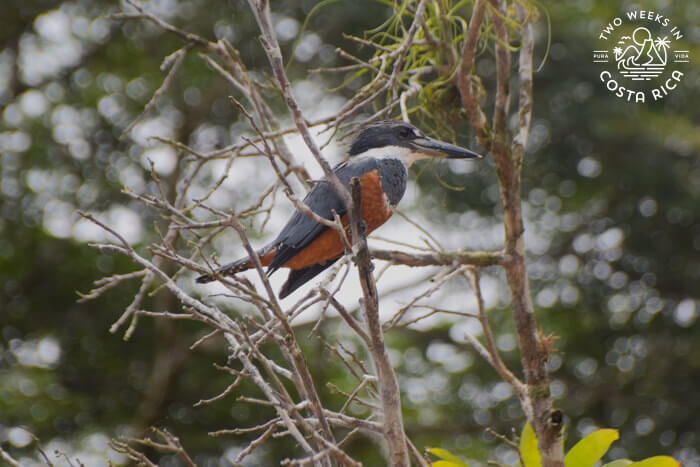
Some that we identified were the Great Egret, Ringed kingfisher, Amazon kingfisher, Bare-throated Tiger Heron, Green Heron, Turkey Vulture, Montezuma Oropendola, Collared Aracari, Sungreb, Wood Stork, and Anhinga. The Anhingas are interesting birds that have a bill that can spear fish. They are most often seen drying their wings on logs.

Our guides told us that birds congregate year-round in the wetlands but especially during dry periods.
Other Wildlife
During the approximately two hours that we spent on the river, we saw some other interesting wildlife as well.
On the underside of a tree branch we saw a family of long-nosed bats. They were sleeping together in a curved line. Jason told us that they position themselves this way to look like a snake. This keeps away predators. Each bat, we learned, can eat up to 2,000 mosquitoes per night!

We also saw many medium sized green basilisk lizards. These are sometimes called Jesus Christ lizards because they can walk on top of water. Alvaro explained that their webbed feet create tiny air bubbles that help keep them on the surface of the water. With some speed, they can travel over the water for up to 6-8 meters (20-26 feet)!
There was also another type of monkey we encountered, the spider monkey. The troop of spider monkeys were much more shy than the howlers. As we watched them swinging through the branches with their long arms, our guides explained that these monkeys only have four fingers and that the fifth one was eliminated through evolution. Spider monkeys are harder to see in Costa Rica so it was really nice to be able to see a group of them.

Lunch
After returning back to the base camp, everyone was excited for lunch. The staff had been busy preparing traditional casados (plates with rice, beans, chicken or vegetables, salad, and plantain chips). For the kids, there were either chicken or fish fingers.
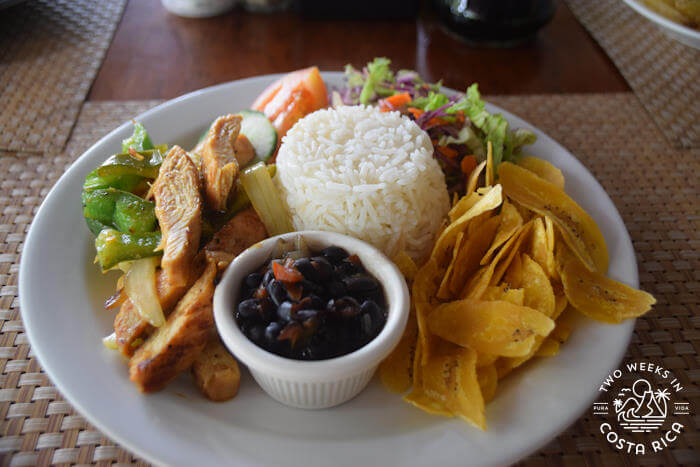
Trapiche Demonstration
After a hearty lunch, we all loaded into the vans. But there was one more surprise. Just down the road, we stopped at a small farm.
As we shuffled through an old wooden corral, the guides showed how they traditionally grind sugar cane to make juice and molasses (called tapa de dulce). We then got to try some of the agua dulce (cold sugar cane drink).

On the other side of the corral, we took seats on simple wooden stools. The guides served us raw cacao beans alongside some freshly brewed coffee. For those willing to try it, a shot of local guaro (liquor made from sugar cane) was also offered up.
This farm stop was just what we needed for the long van ride back to La Fortuna and the perfect way to end our tour.
Booking a Tour to Cano Negro
If you’d like to book the Cano Negro wildlife boat tour through the same company we used and often send clients to, use the booking link below. Booking through us costs the same and helps support our website!
Tour Cost (2024)
$76 per person adults, $53 per person children ages 4-11. Rates plus 13% tax. Children 3 and under are free.
Time Offered
7:30 a.m. (pickup time at La Fortuna-area hotels and vacation rentals).
Duration
Full day, 8-9 hours, including transportation
Children
Cano Negro is a great tour with young children because you’re on a fairly large pontoon boat and the boat portion isn’t too long (around 2 hours). Our kids were 7 and 4 when we did it.
Accessibility
The Cano Negro wildlife boat tour is handicap accessible and good for any age or ability. There is limited walking and the paths around the facility are suitable for a wheelchair. The boat has a sturdy metal ramp to board and there is very little movement when on the pontoon boat (no rocking or swaying).
What’s Included
Transportation from most La Fortuna-area hotels and vacation rentals, certified naturalist guides, snack, drinks, coffee, lunch, and the farm demonstration.
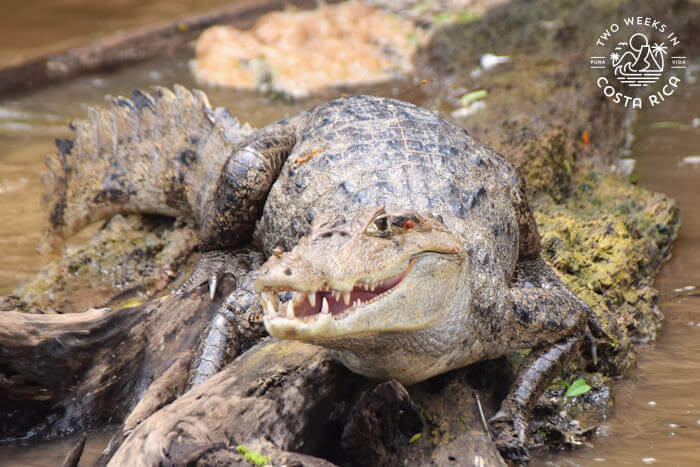
Have a question about visiting Cano Negro or want to share what you saw? Leave us a comment below.
Last Updated: April 30, 2024
Looking for more information to help you plan your trip? Check out these posts:
Arenal Ecoglide: Family-Friendly Zip Lining – The focus of this zip line is to make you feel safe and comfortable but still have a blast!
A Safari River Float in La Fortuna/Arenal: Here is another mellow boat trip to see wildlife but much closer to La Fortuna.
La Fortuna Waterfall: A Tropical Oasis – Visiting this beautiful cascade only takes a couple of hours but is well worth the stop.

